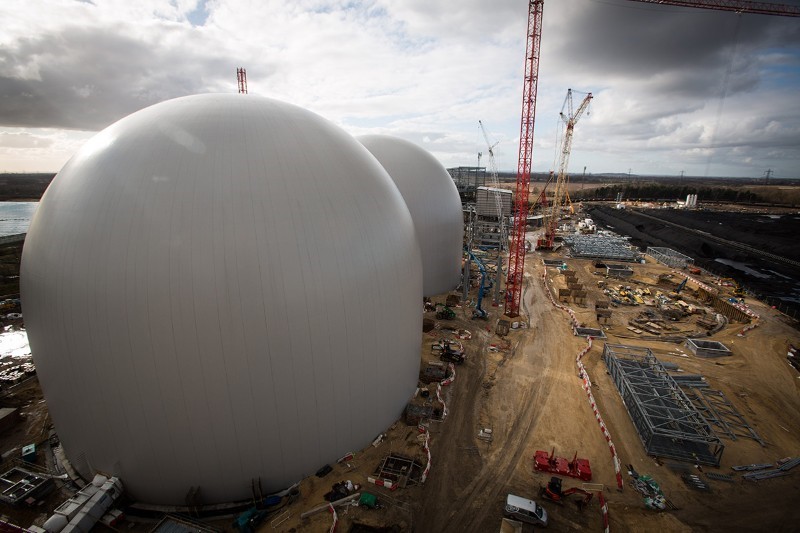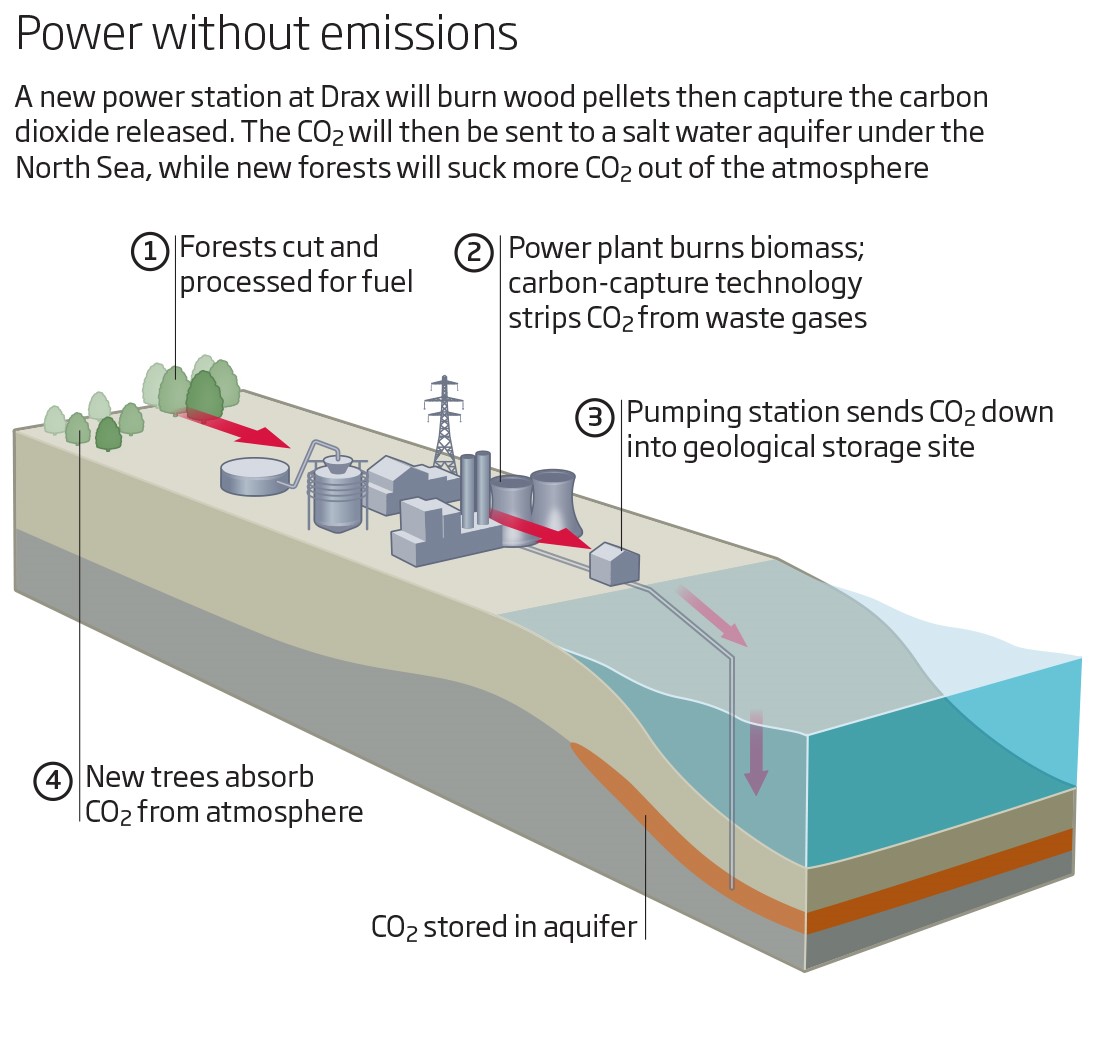
A power station that delivers negative emissions is the paragon of excellence that all sustainable energy ventures should aspire to emulate. Through the combination of biomass fuel made from forests in the American South and underwater carbon capture and storage, one of the world’s largest mega-polluters of greenhouse gases will be reversed into one the world’s largest industrial absorbers of CO2.
The giant coal power station at Drax in Yorkshire supplies the UK with 10% of its entire power needs, releasing 23 million tons of carbon dioxide from its sacks each year. But now, its owners are in the process of replacing coal with wood pellets shipped from forests in Mississippi where the trees are immediately replanted, an effort which stems the tide of pollution in the opposite direction if performed in tandem.
The conversion from coal to biomass is already half underway, replacing 50% of the burned coal with logs that are dried and compressed into pellets, as well as Canadian sawdust and other hardwood pellets from elsewhere in the South.
The next phase of the project sees the creation of a £500-million underwater carbon capture and storage that, beginning in 2020, could capture up to 2 million tons of CO2 before sending it down a 165-kilometre pipeline for burial underneath the North Sea. Together with biomass burning and replanting, this venture is expected to make the electricity carbon-negative for approximately 600,000 homes.

According to the UN Intergovernmental Panel on Climate Change, such measures as those that will be undergone at Drax are utterly vital if we are to halt the progress of global warming and keep it below 2°C.
“To arrest climate change we need negative carbon emissions. At the moment sustainable biomass with CCS is the leading technology to achieve this,” says Peter Emery, a Drax director and chairman of Capture Power, the consortium behind White Rose.
The system fundamentally revolves around replanting new trees to eventually replace those cut down and converted into pellets, but the challenge that this inevitably spawns is how to generate an economic incentive for the forest management that will sustain the new trees.
According to Dale Green, the dean of forestry at the University of Georgia, does see this as an issue; he explains that the American South has flourished into a big lumber supplier precisely because there’s a demand. “The effect of Drax’s arrival has been to help keep the South forested. If we harvest more, we plant more and there is more carbon in the forest,” he says.
Source: Newscientist
Advertisement
Learn more about Electronic Products Magazine





